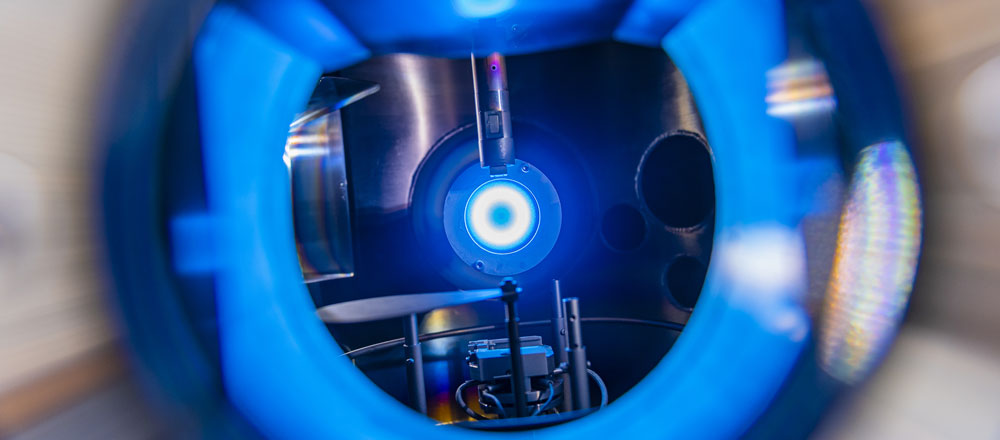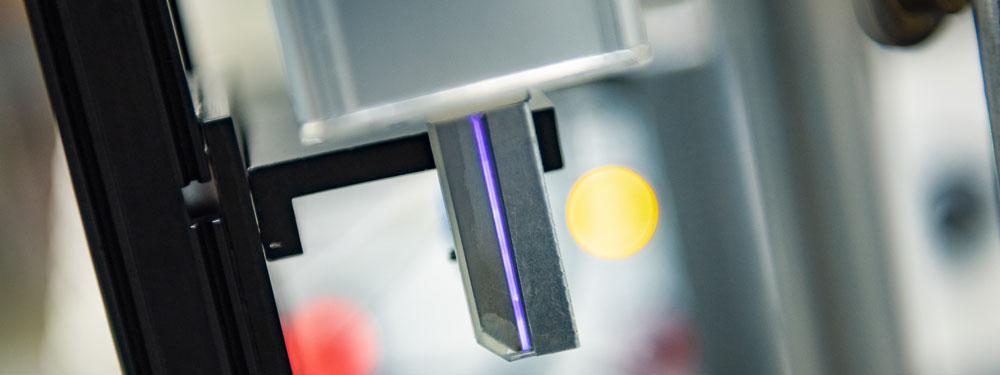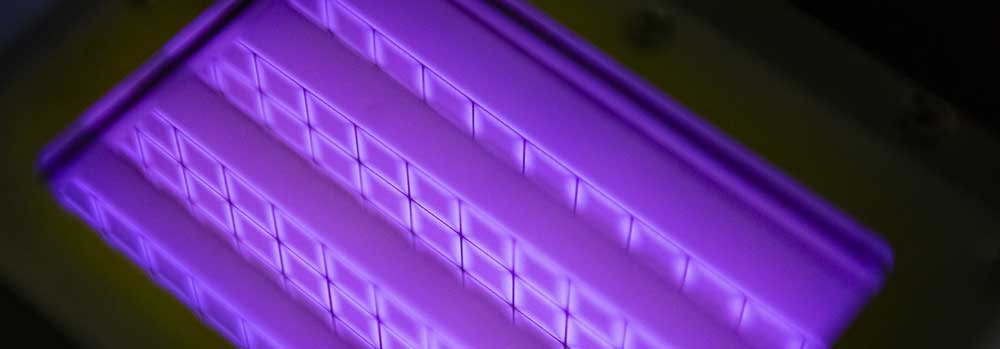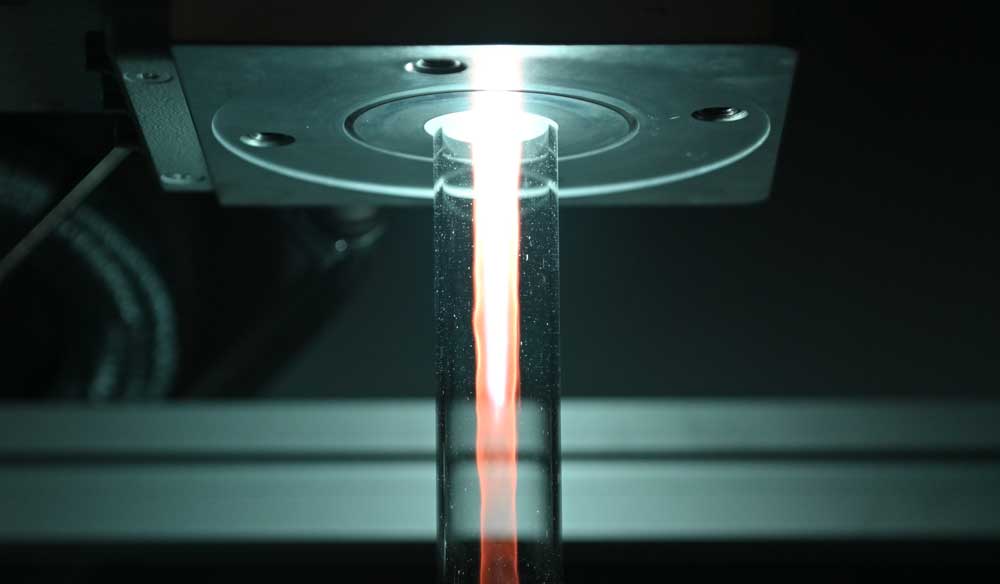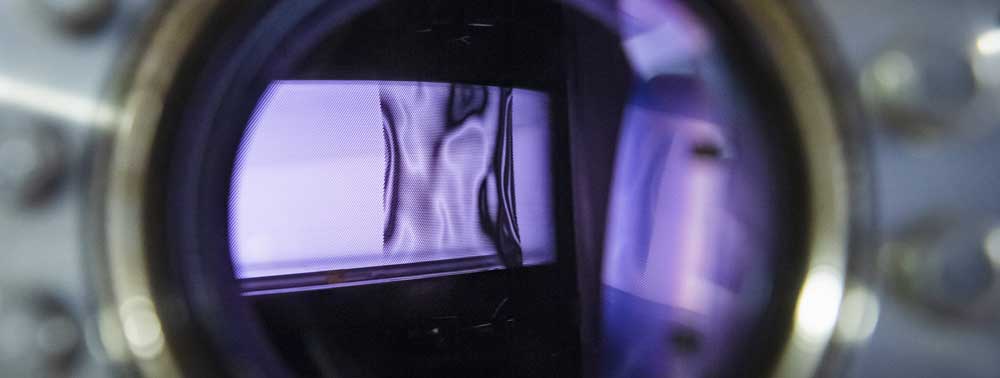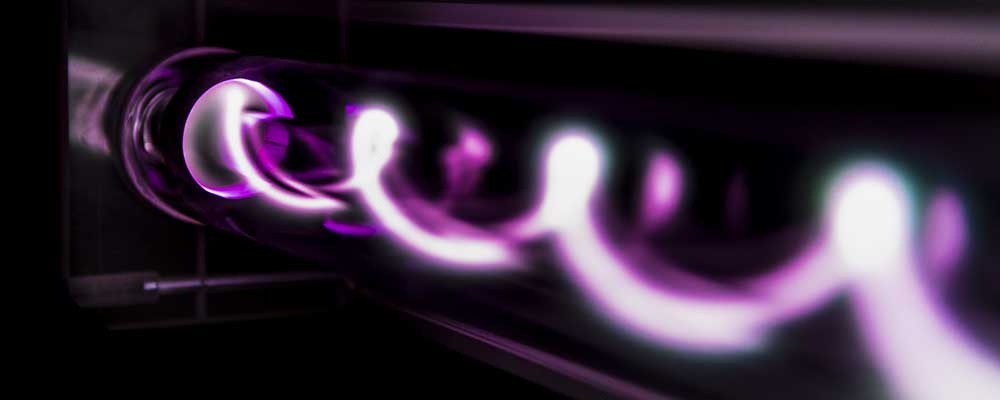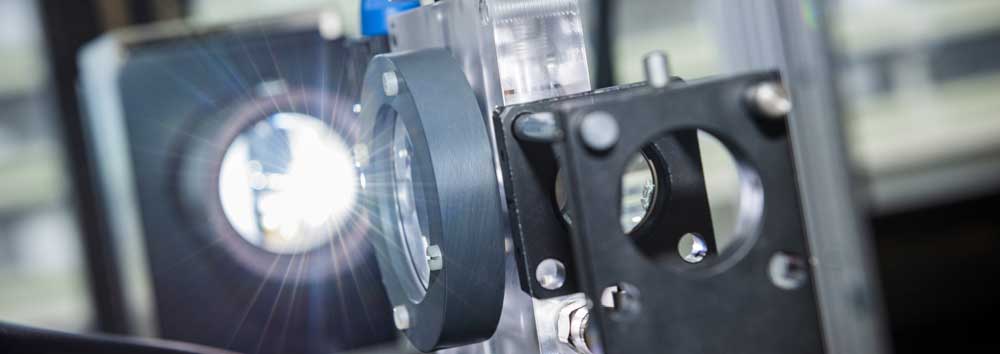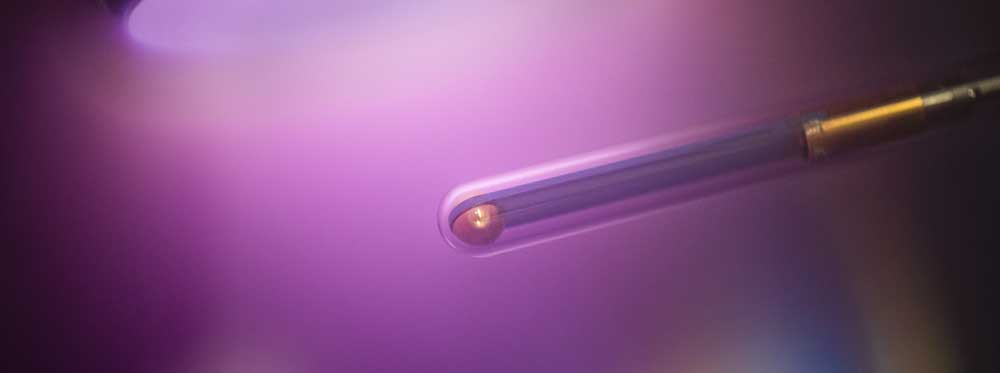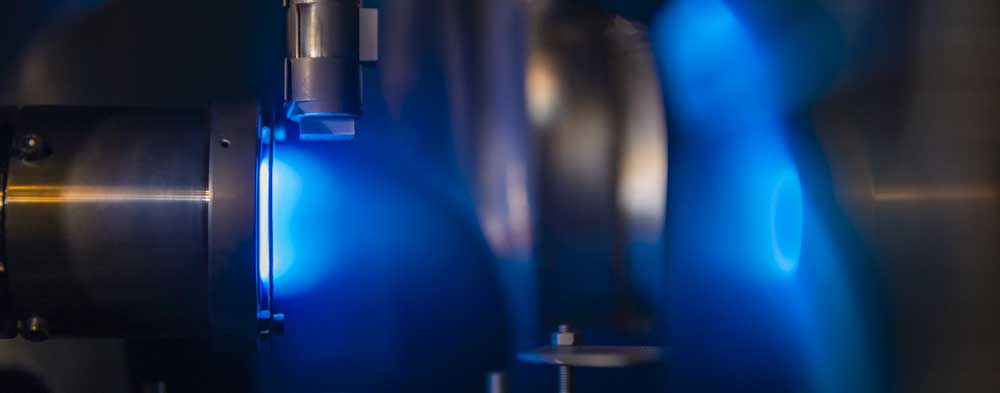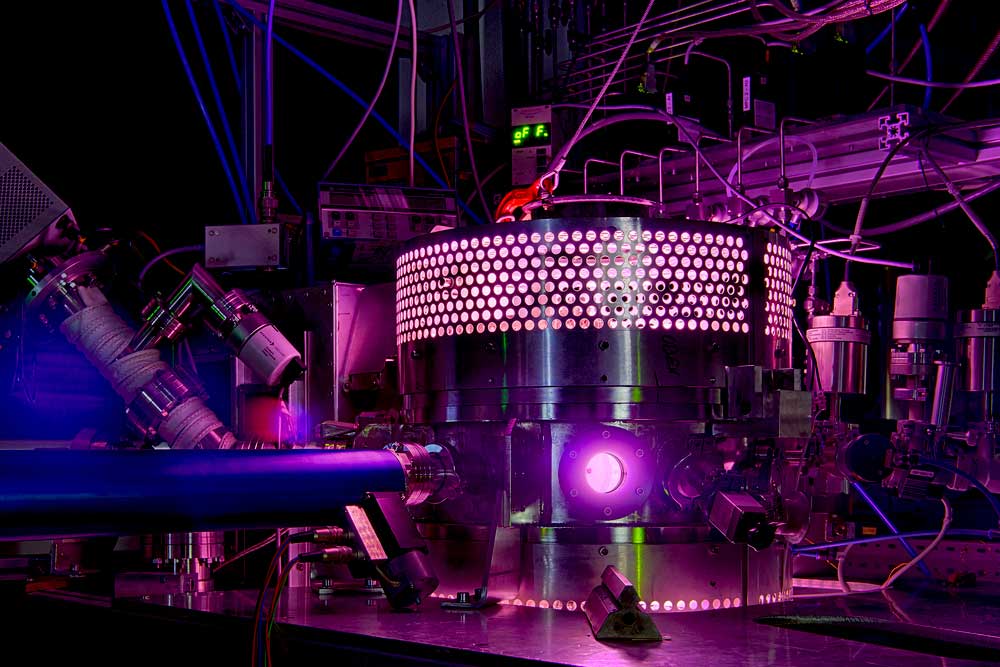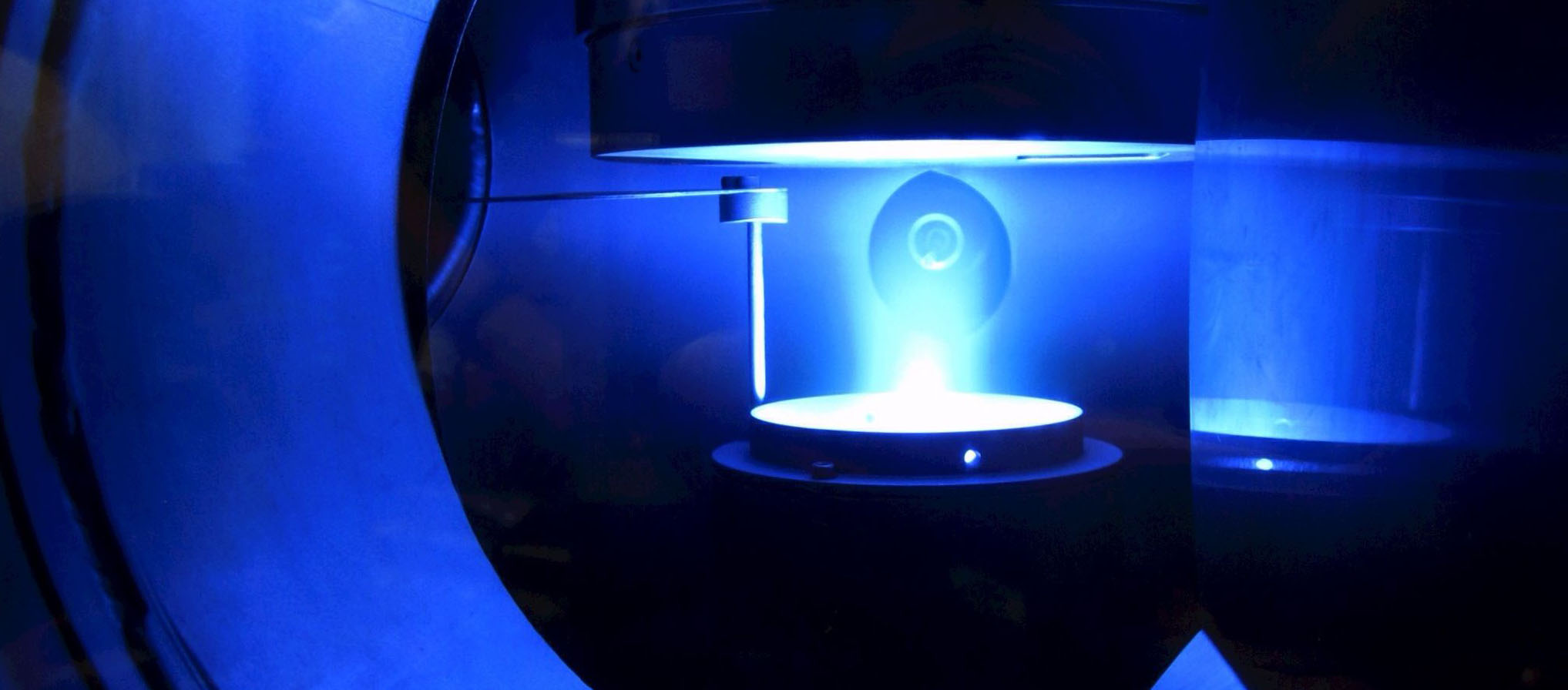A7 - Plasma AerodynamicPIV MeasurementParticle Image Velocimetry (PIV) measurements showing the |
- Details
MGK Colloquium
Virtual MGK Colloquium
The scientific exchange among the CRC members and the group of Early Career Researcher occurred continuously during the three yearly project meetings and in the workshops organized by the CRC 1316 since it starting in 01/2018. However, it is very important that the ECR have also a platform to interact in a conference setting without the impact of their adviser to stimulate the discussions among the ECR. Instead, the CRC 1316 decided to organize an MGK Colloquium on its own by inviting the ECR from the CRC 1316 and from the SFB-TR 87. This meeting was organized by the ECRs J. Kuhfeld and P. Preissing in a virtual format on 21/04/2021. Prominent invited speakers at this event were Prof. A. Bogaerts (university Antwerp), Dr. S. Iseni (GREMI, Orléans) and Dr. T.L. Chng (LPP Paris). Beside presentations within a zoom meeting, virtual poster sessions were performed, enhancing the interaction between the ECR.
- Details
Honour of research of project A5
Project A5 on the Inside Front Cover of Plasma Processes and Polymers
The current issue (April 2021) of Plasma Processes and Polymers features work from project A5 of the CRC 1316 on the topic of "positive and negative streamer propagation in volume dielectric barrier discharges with planar and porous electrodes" on its inside front cover.
The scientists have found that the discharge characteristics of negative surface streamers differ significantly from those of positive surface streamers. While negative streamers develop along the dielectric surface, allowing them to propagate into much smaller dielectric pores, positive streamers floatingly develop above the dielectric.
- The article on the research findings and the Inside Front Cover are freely accessible online.
- Details
Project A7 - Catalysis
Catalytic carbon monoxide oxidation over potassium-doped manganese dioxide nanoparticles synthesized by spray drying
One of the major objectives of the CRC 1316 is the investigation and understanding of the complex interactions between a non-thermal plasma and heterogeneous catalysts. The first results of project A7 describing the thermocatalytic oxidation of CO over MnO2 catalysts were recently published in Emission Control Science and Technology. Particularly, the effect of the incorporated alkali ions on K+ and Na+ on the structural properties and the catalytic performance was emphasized to derive structure-activity correlations.
The MnO2 catalysts were synthesized by a semi-continuous spray drying procedure based on the comproportionation reaction of Mn(NO3)2 and KMnO4. Solutions of both compounds were continuously mixed in a micromixer and the emerging suspension was rapidly quenched by spray drying to inhibit further particle growth. In order to exchange the K+ ions by Na+ ions, NaMnO4 was used instead of KMnO4 during the synthesis. After washing and drying of the catalysts a fine brown powder was obtained, which was used as prepared or calcined at 450°C or 500°C for 4 h in synthetic air.

As shown by the XPS results and TPO profiles Mn (IV) is the predominant oxidation state of all samples prior to calcination proving that all catalysts consist of MnO2. However, the XRD patterns of the uncalcined catalysts reveal an X-ray amorphous structure preventing a more in-depth phase identification. After calcination the phase structure strongly depends on the type and amount of the incorporated alkali ion. The presence of K+ promotes the formation of crystalline alpha-MnO2 and stabilizes its tunnel structure up to temperatures of 500°C. Lower amounts of K+ or the exchange with Na+ lead to less crystalline phases after calcination at 450°C and to the formation of crystalline alpha-Mn2O3 after calcination at 500°C.
The catalytic CO oxidation was performed in a microreactor set up equipped with a non-dispersive IR detector. All uncalcined catalysts revealed a similar catalytic performance regardless of the type or amount of the incorporated alkali ion. Even though the specific surface area of the catalyst decreased from 77 m2/g to 37 m2/g during calcination the pure alpha-MnO2 phase exhibited a superior catalytic activity. Over alpha-MnO2 the temperature at which full conversion was achieved was shifted towards lower temperatures by more than 100°C. In contrast the catalyst containing alpha-Mn2O3 show a catalytic activity similar to the uncalcined catalysts indicating that not only the higher degree of crystallinity but also the structural properties of alpha-MnO2 cause its high catalytic activity. The incorporation of K+ ions is required to stabilize the tunnel structure of alpha-MnO2
- Details
PLASMA RESEARCH, project B7
Lightning bolt underwater
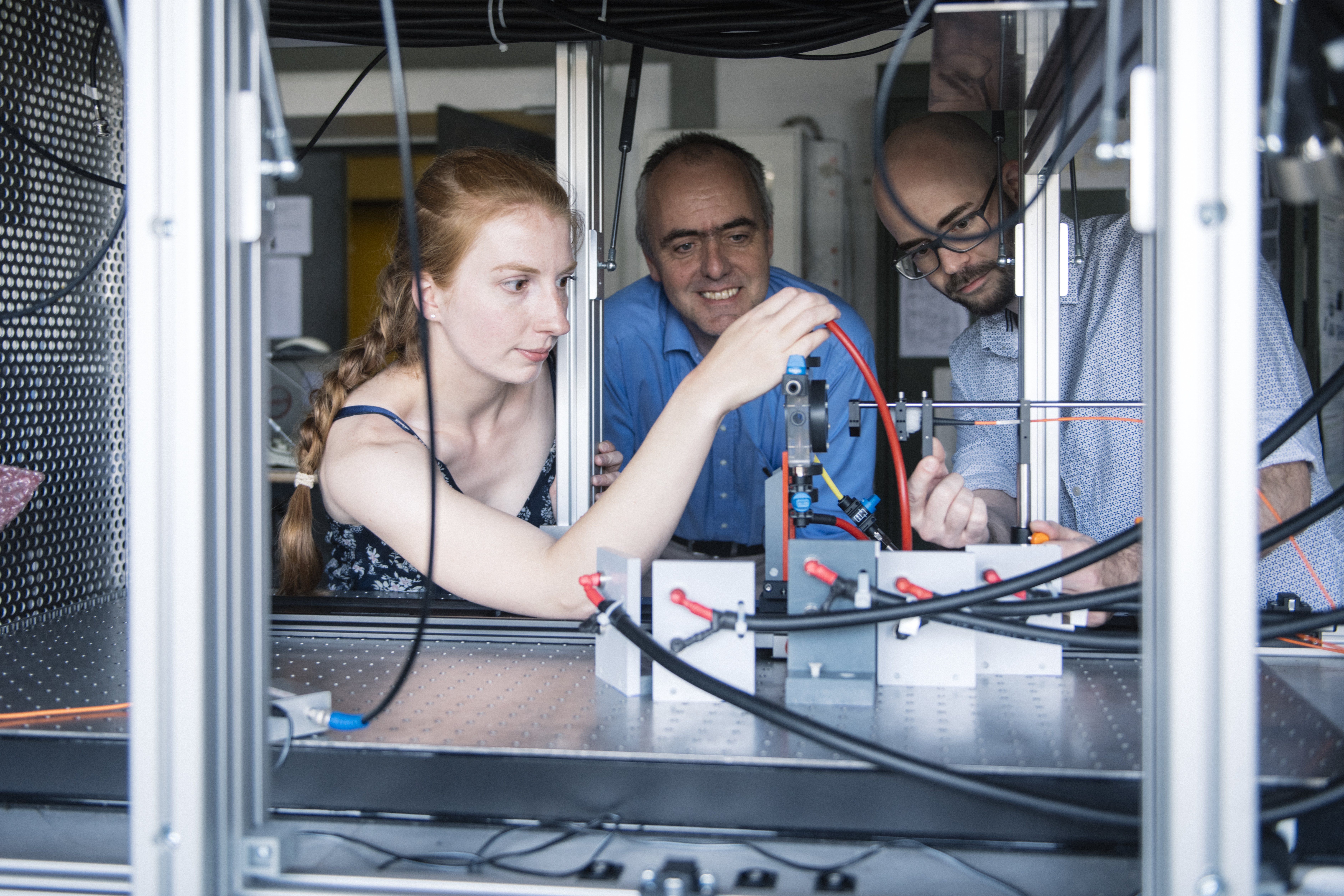
A plasma tears through the water within a few nanoseconds. It may possibly regenerate catalytic surfaces at the push of a button.
Electrochemical cells help recycle CO2. However, the catalytic surfaces get worn down in the process. Researchers at the Collaborative Research Centre 1316 “Transient atmospheric plasmas: from plasmas to liquids to solids” at Ruhr-Universität Bochum (RUB) are exploring how they might be regenerated at the push of a button using extreme plasmas in water. In a first, they deployed optical spectroscopy and modelling to analyse such underwater plasmas in detail, which exist only for a few nanoseconds, and to theoretically describe the conditions during plasma ignition. They published their report in the journal Plasma Sources Science and Technology on 4 June 2019.
A plasma tears through the water within a few nanoseconds. Following plasma ignition, there is a high negative pressure difference at the tip of the electrode, which results in ruptures forming in the liquid. Plasma then spreads across those ruptures.
Video: Experimentalphysik II
Plasmas are ionised gases: they are formed when a gas is energised that then contains free electrons. In nature, plasmas occur inside stars or take the shape of polar lights on Earth. In engineering, plasmas are utilised for example to generate light in fluorescent lamps, or to manufacture new materials in the field of microelectronics. “Typically, plasmas are generated in the gas phase, for example in the air or in noble gases,” explains Katharina Grosse from the Institute for Experimental Physics II at RUB.
Ruptures in the water
In the current study, the researchers have generated plasmas directly in a liquid. To this end, they applied a high voltage to a submerged hairline electrode for the range of several billionth seconds. Following plasma ignition, there is a high negative pressure difference at the tip of the electrode, which results in ruptures forming in the liquid. Plasma then spreads across those ruptures. “Plasma can be compared with a lightning bolt – only in this case it happens underwater,” says Katharina Grosse.
Hotter than the sun
Using fast optical spectroscopy in combination with a fluid dynamics model, the research team identified the variations of power, pressure, and temperature in these plasmas. “In the process, we observed that the consumption inside these plasmas briefly amounts to up to 100 kilowatt. This corresponds with the connected load of several single-family homes,” points out Professor Achim von Keudell from the Institute for Experimental Physics II. In addition, pressures exceeding several thousand bars are generated – corresponding with or even exceeding the pressure at the deepest part of the Pacific Ocean. Finally, there are short bursts of temperatures of several thousand degrees, which roughly equal and even surpass the surface temperature of the sun.
Water is broken down into its components
Such extreme conditions last only for a very short time. “Studies to date had primarily focused on underwater plasmas in the microsecond range,” explains Katharina Grosse. “In that space of time, water molecules have the chance to compensate for the pressure of the plasma.” The extreme plasmas that have been the subject of the current study feature much faster processes. The water can’t compensate for the pressure and the molecules are broken down into their components. “The oxygen that is thus released plays a vital role for catalytic surfaces in electrochemical cells,” explains Katharina Grosse. “By re-oxidating such surfaces, it helps them regenerate and take up their full catalytic activity again. Moreover, reagents dissolved in water can also be activated, thus facilitating catalysis processes.”
By Meike Drießen, Translated by Donata Zuber
- Details
New funding - Ruhr Conference
Plasma research contributes to new Research Center “Future Energy Materials and Systems”
The state NRW will fund four research centers and one research college during the next years in the framework of the funding instrument "Ruhr Konferenz". One research center “Future energy materials and systems” will support the plasma science at RUB in the area of synthetic plasma chemistry. Plasma chemistry is a key subject in the CRC 1316 and will be strengthend by this measure in the upcoming years. (Image (c) hagenvontroja)
- Details
Public Relations
Plasma Trial Day - What is plasma and where does it find application in technology & research?
Interested high school students are invited to participate in the Plasma Trial Day on Jan. 28, 2020 from 10 a.m. to 3 p.m. online. The chairs of the Ruhr-Universität Bochum will introduce themselves.
Technical plasmas find their application in many areas of everyday life and enable many achievements of our engineered world, such as in microelectronics, optics or mechanical engineering. But also in areas like air purification, sterilization and medicine plasmas can be used effectively in innovative concepts.
The fundamentals of technical applications are our field of research. We work interdisciplinary with partners from research and industry to develop innovative concepts and systems. And we would like to explain to you the largely unknown concept of physical plasma and introduce you to how we use and research the "fourth state of matter". Furthermore, we would like to show you how you might become part of a research team in the future!
Please register by email to:
- Details
Project meeting 16./17.11.2020
Fall meeting of the consortium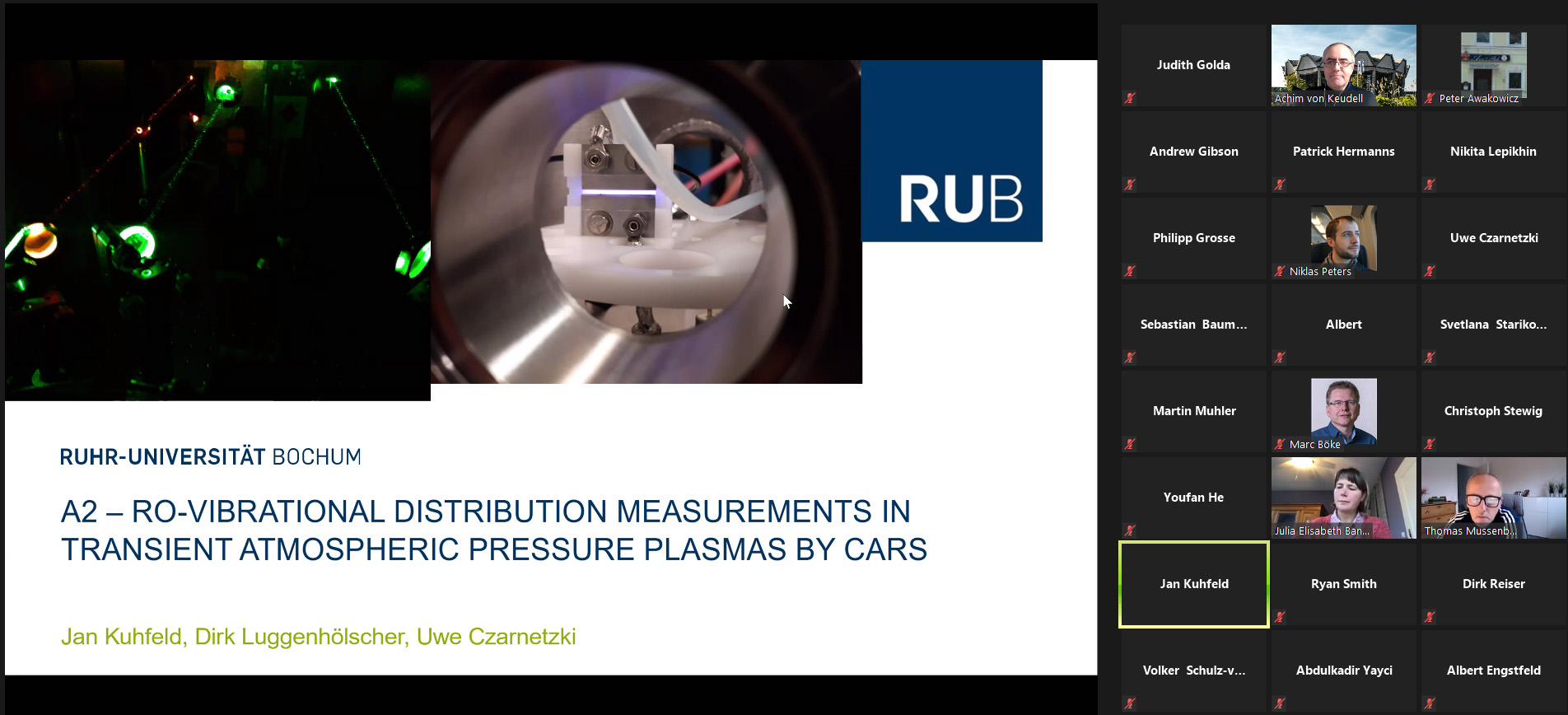
The annual fall meeting of the CRC took place online to discuss the recent progress within the projects and their collaborations. Due to the online format it was easy to integrate the Mercator fellows into these discussions. The meeting was complemented by a small workshop on communication aspects related to gender issues.
- Details
New appointment
Thomas Mussenbrock appointed at RUB
Since November 1, 2020, Prof. Dr. Thomas Mussenbrock has held the professorship for plasma technology at the Faculty of Electrical Engineering and Information Technology.
He conducts research on low temperature plasmas as well as on nanoelectronic and nanoionic components. His team develops analytical and numerical methods for modeling and simulation and applies them in interaction with experiments. "At the Ruhr-University Bochum, I find the ideal conditions for this," explains Thomas Mussenbrock. "Here, these experiments run right next door. I can follow them live and draw conclusions for our simulations, which in turn have a positive effect on the next experiments. In concrete terms, it is often a question of getting energy into a plasma efficiently and in a targeted manner. "Our goal is to excite only very specific particles." For Thomas Mussenbrock, much of his work revolves around the transport of energy and matter. "We want to understand the macroscopic behavior of the systems on the basis of the microscopic dynamics of the atoms, molecules, electrons and photons involved," the researcher explains.
In detail, plasmas play a decisive role in the manufacture of microelectronic components and circuits, for example. "More than 70 percent of all manufacturing steps are plasma-assisted," says Thomas Mussenbrock. "It is not for nothing that they say: No plasma, no iPad.
The chair of plasma technology is involved in two collaborative research centers among others. This research centers are the collaborative research center transregional SFB-TR 87 "Pulsed High-Power Plasmas for the Synthesis of Nanostructured Functional Layers," and the CRC 1316 "Transient Atmospheric Pressure Plasmas - from Plasma to Liquids to Solids,". Morevoer, Thomas Mussenbrock is also involved in the research group of the German Research Foundation FOR 2093 "Memristive Components for Neural Systems".
- Details
New in the team
Judith Golda appointed as assistant professor for plasma physics at interfaces
The members of the plasma research groups on campus welcome its newest member Jun. Prof. Dr. Judith Golda, who will take over the group "Plasma Physics at Interfaces" from 01.11.2020. Dr. Golda studied and received her doctorate in Bochum.
After several stays abroad, she was last employed as group leader at the Christian-Albrechts-University of Kiel. In her research, she focuses on the investigation of non-equilibrium plasmas and their interaction with surrounding media such as solids or liquids by means of numerous spectroscopic techniques. These topics are seamlessly embedded in the current SFB 1316.


